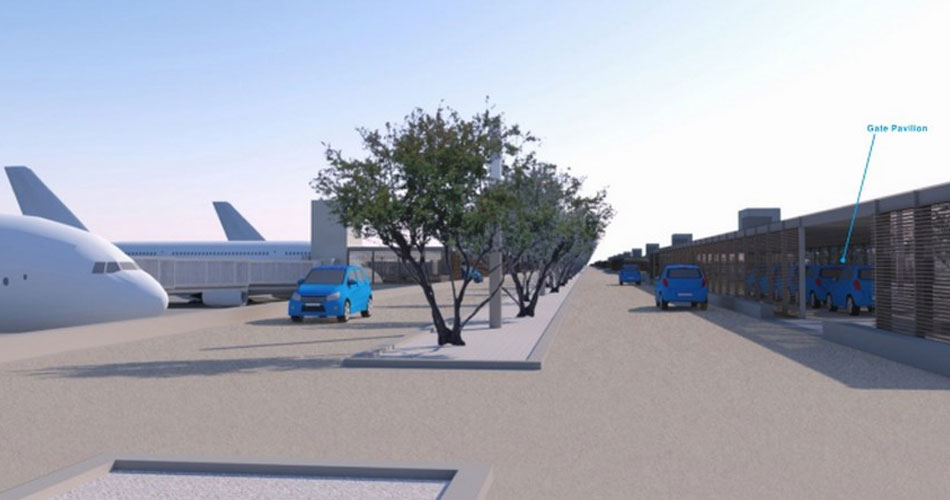The driverless car is one of the biggest disruptive technologies in society today. Its potential effect on airport design is a complete re-thinking of this typology. Conceived as a means of transporting passengers to and from the plane, the driverless car enables an unprecedented opportunity in experience creation.
First Award | RTFA 2017 Awards
Category: Transportation Terminal (Concept)
Participant Name: Jonathan Meier
Country: United States
This project conceives a major international hub in the Arabian Gulf where a fleet of driverless cars are utilized to provide VIP-like service to all passengers by escorting them directly to and from their plane.
One important impact of this technology on airport design is a divorcing of the airport terminal from the aircraft stand. There are no more concourses. There are no more gates. However, the potential is much greater — there is the opportunity to conceive an immersive experience which, in this case, is the experience of a desert safari.
The experience of a desert safari is about capturing the spirit of a place and creating a memorable experience for passengers. A culture is inextricably tied to its natural landscape, its flora and fauna, and making it part of the passenger journey makes for a more meaningful experience.
The desert safari experience also serves multiple functional purposes. First, the outdoors is one of the best stress relievers. After a long flight, this is a perfect way to counteract the pressures of air travel.
Furthermore, the desert safari experience serves to evenly distribute the population of passengers moving around the airport. This by itself reduces congestion, however it also provides the time needed for the technology managing the fleet to dynamically adjust for pick-up and drop-off requests to eliminate any wait times.
The Master Plan is conceived with two distinct zones: the terminal zone and the aircraft operating area (AOA).
The Terminal zone is a large open area conceived as a nature preserve, which is central to the experience of desert safari. This open area is maximized to an area of approximately two square kilometers and its periphery is designed to blend into the horizon and hide necessary, but unsightly, airport facilities.
The AOA is designed for maximum efficiency in aircraft movements. Without concourses and other traditional airside elements creating movement constraints, airplanes can land, taxi, and takeoff under ideal conditions, which allows the airport to maximize their operating efficiency in terms of On-Time Arrivals and Departures.
This airport proposal leverages an emerging technology to set a new standard in customer experience. The airport becomes a place of respite and relaxation, and of natural beauty, where people of all walks of life are given a completely personalized experience.
If you’ve missed participating in this award, don’t worry. RTF’s next series of Awards for Excellence in Architecture & Design – is open for Registration.
Click Here
